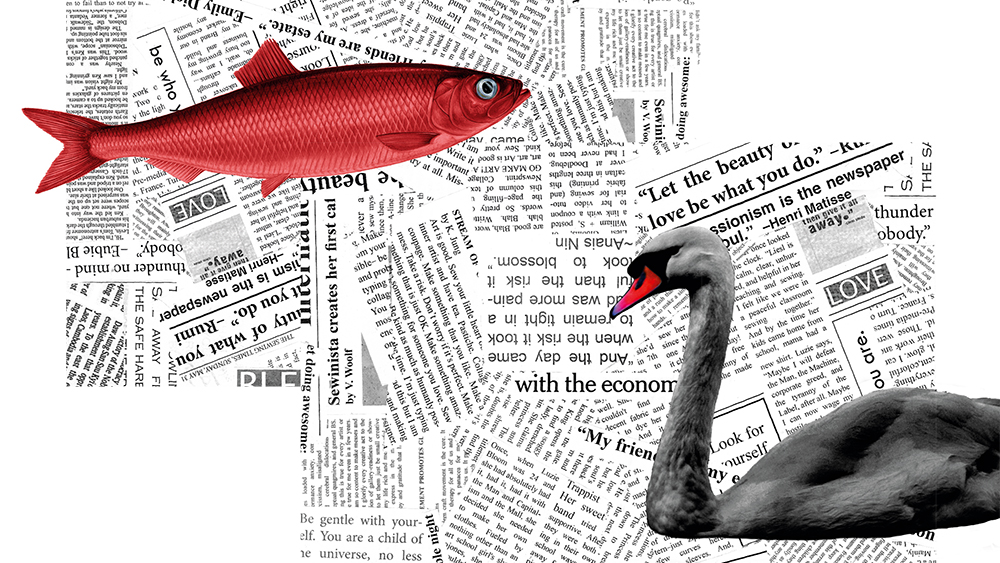Much has been written about US President Donald Trump ripping up the rules of world trade. The real picture is more nuanced.
In the past 16 months, the Trump administration has taken a wrecking ball to the global trade order. Trump pulled out of the Transpacific Partnership; put TTIP negotiations with Europe on ice; pushed his administration into an intense NAFTA renegotiation with terms unacceptable to Mexico and Canada; and dusted off the rarely used Section 232 National Security Provision to slap global sanctions on aluminum and steel. The Trump administration’s trade bombast has set off a flurry of reactions globally, leading many to ask: Are we on the brink of a global trade war?
The evidence points to the need for a bit more level-headedness. First, Washington’s current trade war-mongering follows a familiar pattern that has characterized the Trump administration’s policy choices from climate change to the Iran nuclear agreement: A dramatic announcement meant to shake the international system to its core and create an atmosphere of uncertainty, quickly followed by a series of furtive claw-backs, exemptions, and carve-outs.
Second, for all its flash, the administration’s protectionist bluster has not affected significant change in global trade. The WTO sees strong trade growth of around 4.4 percent in 2018, roughly on par with 4.7 percent growth in 2017.
Third, with the most recent imposition of tariffs on steel, aluminum, washing machines, solar panels, and other goods and products, Trump is delivering on a campaign promise to get tough on China. But a long-term reciprocal trade war would hurt the very people that got Donald Trump elected in the first place.
China and the EU have aimed a dagger at the heart of his base, the 35 percent of US voters from Iowa to Ohio. The EU has dangled retaliatory measures on Kentucky Bourbon and Wisconsin-based Harley-Davidson, a largely symbolic action meant to deal a blow to the Republican Senate Majority Leader and House Speaker, respectively.
But American farmers in the heartland would be hit especially hard by Chinese tariffs on soybeans, pork, cotton, and other items. Beijing announced those trade sanctions on April 4, and they will indeed go into effect should the US and China fail to reach an alternative agreement. The US exports $12 billion in soy to China every year, and soy crop is essentially the life blood of economies in prairie states like Nebraska.
Fourth, other economic powers are trying to balance US protectionism. Thus far, the bark and bite have not matched. But if Trump pushes ahead with strict tariffs, free traders in Europe, Asia, and Latin America are already working to create a post-American safety net for the global trade order. Under Canadian leadership, eleven Pacific states signed the Comprehensive and Progressive Agreement for Transpacific Partnership (CPTPP) without the United States in March. The EU and Mexico successfully concluded negotiations to retrofit their trade agreement, with Merkel praising Mexican President Enrique Peña Nieto at this year’s Hanover Messe trade show.
From Hot War to Deep Freeze
In reality, the story of the trade order is more nuanced. The global trade system is entering into an ice age. It looks something like Han Solo frozen in carbonite—not dead but not moving, at least not institutionally.
Trump is in many ways just the natural extension of a global trend to put the brakes on trade liberalization. The WTO system, which still has a role in trade enforcement, has been diminished as an agenda setter since the Doha Round failure more than a decade ago. For both Germany and China—the greatest beneficiaries of the classical trade system—free trade evangelism tends to be narrowly-defined and self-serving.
For all Chancellor Merkel’s current free trade sanctimony, she did little to salvage the EU’s most ambitious trade project, the Transatlantic Trade and Investment Partnership (TTIP), as approval in Germany tanked and more than 200,000 protesters took to the streets in 2016. China, the other free trade darling of the moment, is massively protectionist on digital services, so much so that the five biggest US companies (Alphabet, Apple, Facebook, Amazon, and Microsoft) barely make a dent in the social media and e-commerce landscape of the middle kingdom.
Choppy electoral waters, national elections in Mexico, the US midterms, the European Parliament elections in 2019—bring more challenges to a deepening of the trade system. EU member-states have been aggressively reasserting the right of national—and regional—parliaments to have veto power over trade agreements negotiated by the Commission. In the United States, even if the Trump administration is able to successfully conclude a NAFTA 2.0, it looks highly unlikely that Congress would ratify it.
The Great Illusion
In 1910, British public intellectual and Labour activist Norman Angell published The Great Illusion—the “End of History” of its day—which triumphantly declared that the depth of trade between the great powers of Europe had rendered war impossible. Yet today, as then, the unlikelihood of a trade war must not fuel complacency about the likelihood of actual war. Even if business does not have the power it once had to drive a positive trade agenda, the status quo trading system is still sticky. The same cannot be said for an increasingly unmoored security system with ongoing wars in Syria and Ukraine and the potential for even greater conflict in North Korea and Iran. Trade war is not what should worry us—it’s actual war.







